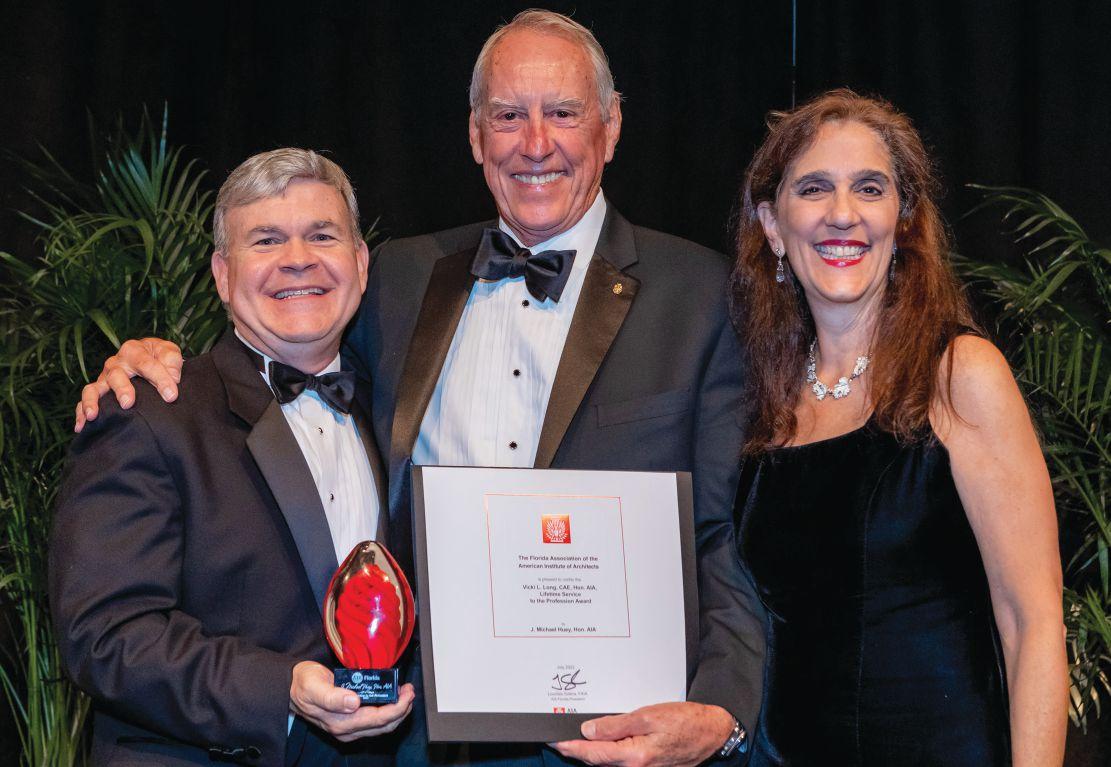
2 minute read
Remote Work is Here to Stay
from AIA Florida
By Beth Colvin
At the end of the day, Brooks + Scarpa’s Jeffrey Huber, FAIA, says, architects make stuff.
That making stuff requires a level of collaboration, whether it is in a studio environment or in a Zoom meeting.
Huber, in Fort Lauderdale, works for a firm headquartered in Los Angeles and frequently collaborates with KMF Architecture in Orlando.
“Our two offices have been working remotely for a long time,” Eric Kleinsteuber, AIA, said of the partnership, which started with a University of North Florida chapel more than 10 years ago.
“Our offices were pandemic-ready before the pandemic,” Huber agreed.
When COVID-19 struck, architecture firms, like many other industries, had to work from home, including doing site visits, meeting clients, creating drawings and more. And, post-pandemic, many Florida practices are finding those remote tools are here to stay.
At DLR Group, the entire firm transitioned to a hybrid work policy earlier this year.
Ronok Nichols, AIA, said the hybrid schedule of three days in the office, including one day where everyone is in the office, gives their workforce more flexibility. On the required office day, which differs for each office, DLR serves breakfast and works to energize the day, motivating staff to get things done in the office, together.
The model implies a trust between the employer and employee that is good for team-building and for the end product, Nichols said.
Chad Oppenheim, FAIA, principal of Oppenheim Architecture, said that before the pandemic, his offices would allow remote work for employees on a case-bycase basis, but that post-pandemic, they have switched to a policy that embraces flexibility.
“It would be strange if we denied to our staff what we’re trying to build for our clients,” Oppenheim said. His employees across the world may go in the office or work remotely, depending on the needs of the job at hand.
“We’re celebrating the ability to live their lives in the way that they want to live them,” he said. “People can’t control what happens to them. They shouldn’t be penalized, and we shouldn’t either by having to lose that person.”
That said, Oppenheim said his offices are continuing to fine-tune how their teams work.
“It works best when everyone is really busy,” Oppenheim said. “That’s how I work best, too. We want great people and we want to provide them a great environment.”
Smaller firms, like Huber’s and Kleinsteuber’s, find that, just like the spaces they build, their people have to be flexible, too. While both firms are very familiar with remote work, they find most of their workforce still reports to the office in firms that pride themselves on creativity and collaboration.
“A studio atmosphere builds conviviality and an office culture,” Kleinsteuber said, and both he and Huber agreed that face-toface time is invaluable in generating ideas, collaboration and mentorship relationships.
At Rowe Architecture most employees are also back in the office. Their office is highly collaborative, principal Rick Rowe, AIA, said, and the firm has a lot of room for people to spread out.
The firm still uses remote tools for meetings, saving everyone travel time. It is also easy to have a conversation and share graphics and other files, Rowe Architecture’s John Hadley, AIA, said.
“I think Zoom is here to stay,” Hadley said. “Regardless of whether there was a pandemic or not, it’s just flat-out useful. The key is to be flexible and respond where your client is.”











